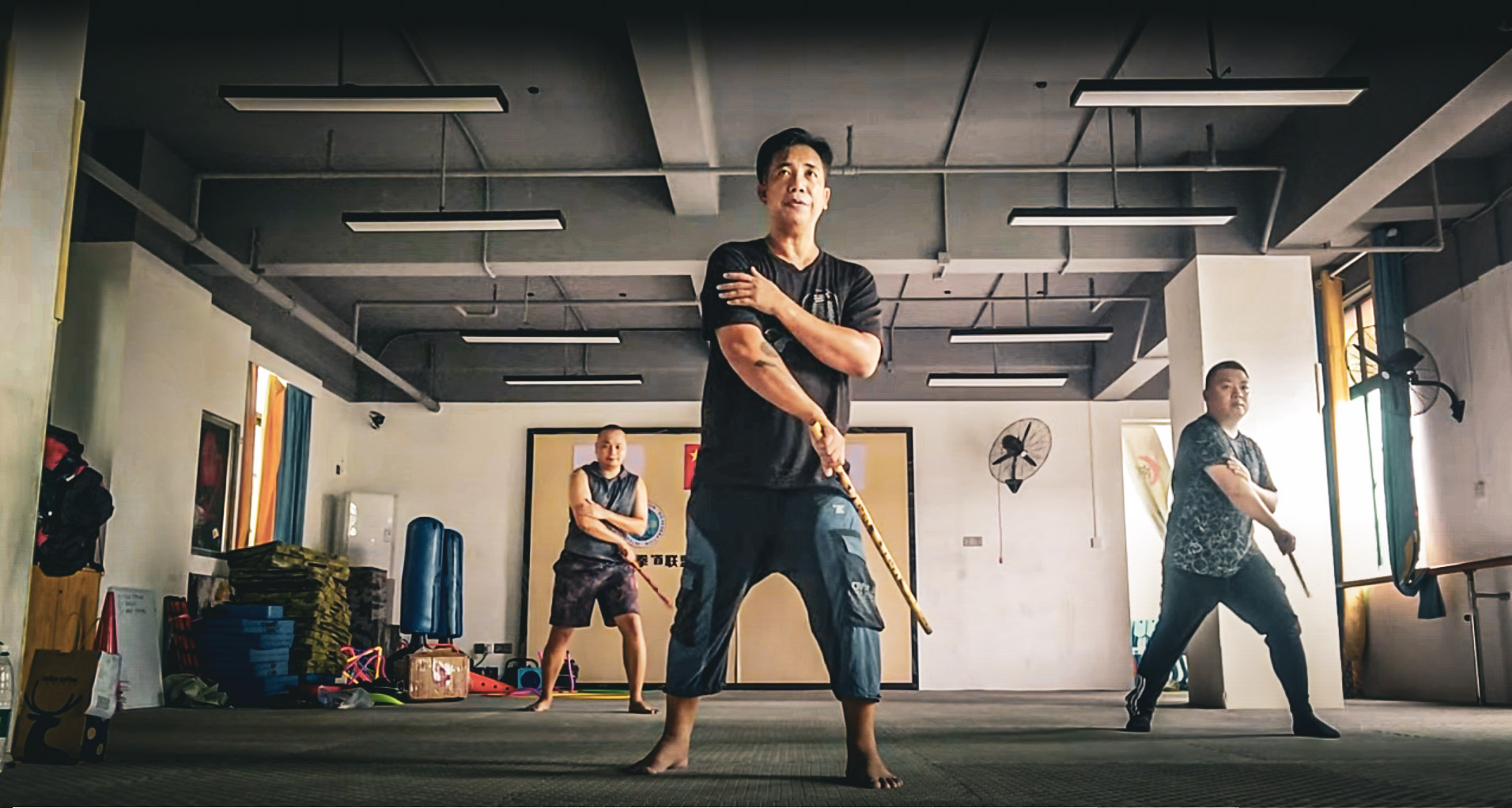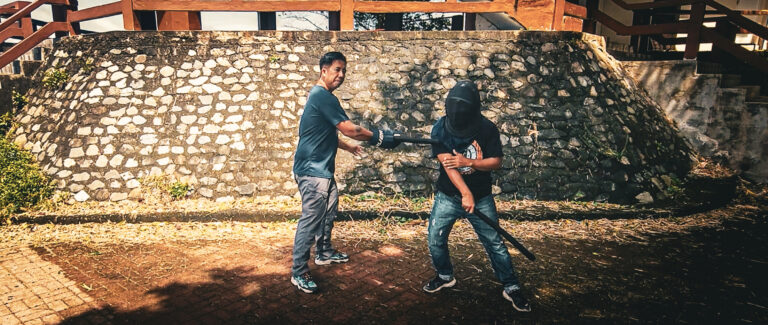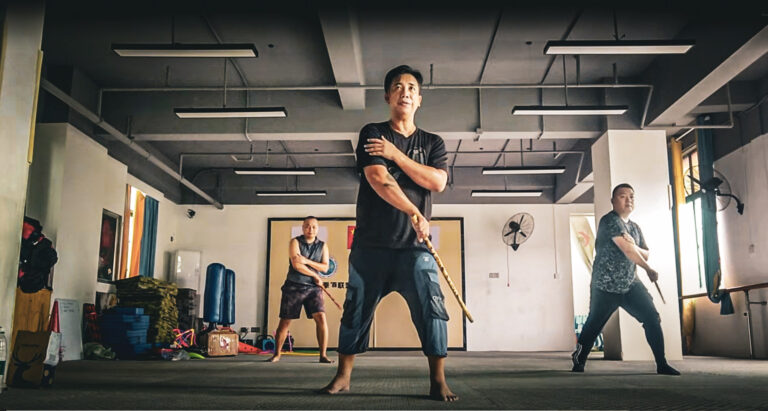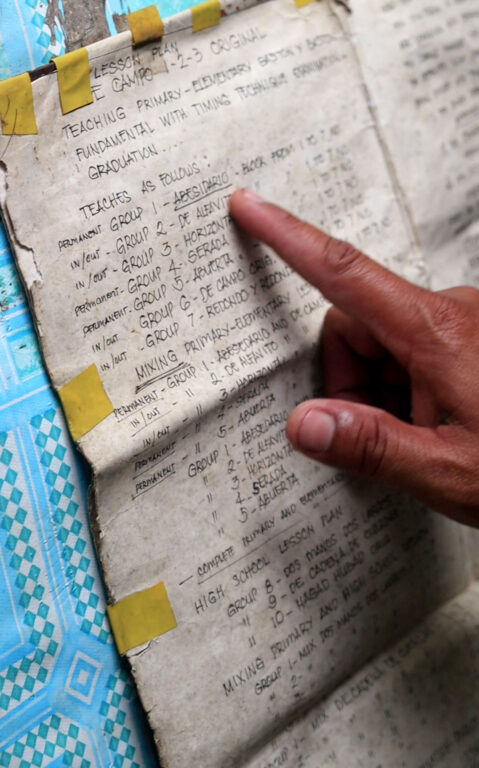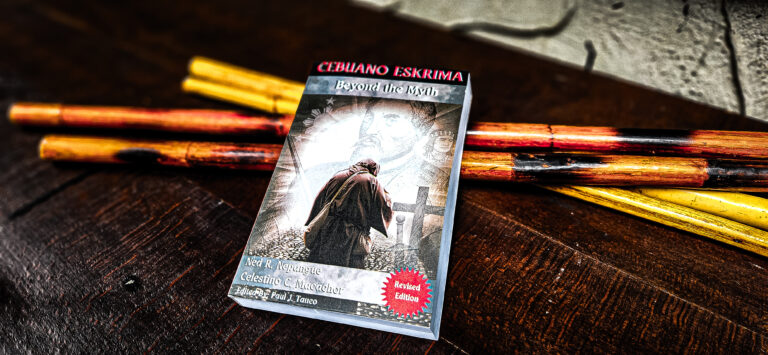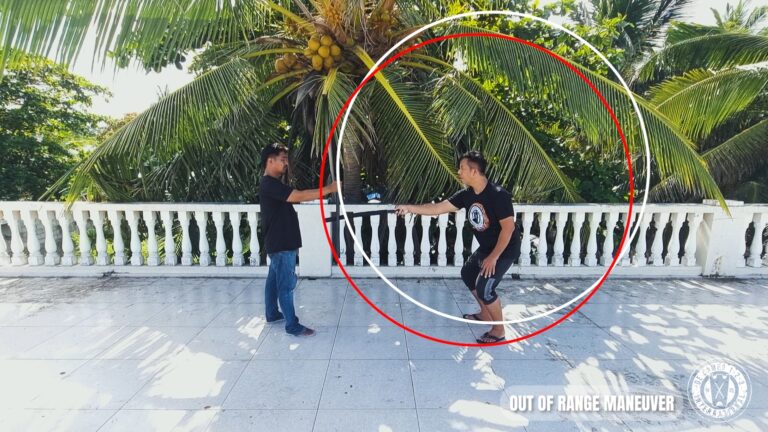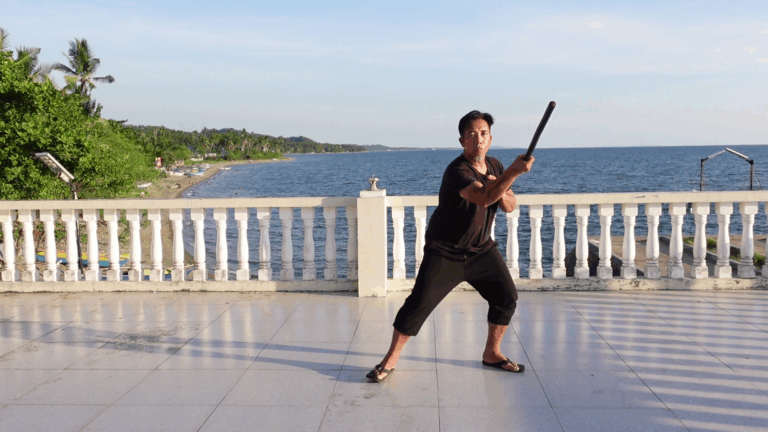Bicep tapping has been a curious subject in Filipino Martial Arts (FMA). It’s a movement found in various Eskrima, Kali, and Arnis systems, though many styles don’t incorporate it. In De Campo 1-2-3 Original, we call it Pik-Pik, and to us, it is much more than just a simple “bicep tap.” This movement, executed by the live hand (the non-weapon hand), complements De Campo’s techniques by enhancing the speed, rhythm, and control of strikes. With versatile applications across angles and positions, Pik-Pik is an essential element for refining timing and creating adaptability. Below, we explore the three main functions of Pik-Pik, along with insights on its adaptability and why it’s sometimes misunderstood in the wider Filipino Martial Arts (FMA) community.
1. Acceleration of Strikes
When used during a strike, Pik-Pik creates a temporary fulcrum between the shoulder and the weapon-holding hand, allowing the strike to accelerate. This effect sharpens both the speed and impact of the movement. By slapping or tapping with the live hand (often the bicep but not limited to it), the strike gains a quick boost in speed and flow. This slap momentarily shortens the lever arm, allowing the strike to move faster and more sharply. It’s a tactical use of body mechanics, not just hitting harder but applying physics to enhance speed and impact. This fulcrum effect works effectively across different strike angles, including downward, horizontal, and upward strikes.
2. Rhythm and Timing Enhancement
Pik-Pik also functions as a rhythmic guide, like a metronome for the practitioner. Each slap or tap feeds the brain with feedback, synchronizing movements and honing timing. This rhythm is crucial in the fast-paced exchanges within De Campo, allowing the body to stay tuned into the flow of action. When applied after a strike without the intention of acceleration, Pik-Pik is purely for rhythm, helping refine timing and coordination for subsequent strikes.
3. Redirection and Reversal of Strikes
One of the unique aspects of Pik-Pik is its capacity to both accelerate and redirect or reverse a strike simultaneously. When the live hand slaps or taps during the strike, it can shift the strike’s angle or even reverse it in the case of a half-strike (where the strike retracts back to its chambered position). This dual effect of speeding up and redirecting a strike shows Pik-Pik’s adaptability, highlighting its fluid role in the De Campo system.
Why Pik-Pik Is Often Misunderstood in FMA
The Pik-Pik movement, or “bicep tap,” can sometimes be a source of humor or skepticism within the FMA community, often due to a lack of understanding. Without proper instruction, practitioners may see it as a trivial or superficial movement, not fully recognizing its technical purpose. Some may dismiss it as an unnecessary tap, unaware that it accelerates strikes, aids in rhythmic timing, and enables redirection or reversal.
The nuances of Pik-Pik—its use as a fulcrum, its role in timing, and its versatility across angles and distances—reveal the depth of De Campo. To those who understand it, Pik-Pik exemplifies the intricacies of FMA, where even a subtle movement carries multiple layers of purpose and skill. It serves as a reminder that what may seem simple can, in fact, be foundational to mastery.
Other Possible Uses of Tapping or Slapping
While Pik-Pik has unique and specific applications in De Campo, tapping in Filipino Martial Arts has broader interpretations and uses that some practitioners may find helpful. In other systems, tapping serves to condition the body or simulate realistic contact, which may indirectly support training.
Condition Body Parts
Regular tapping or slapping on certain areas of the body can help harden or desensitize those areas, preparing the body for impact. This type of conditioning can build resilience, particularly in the arms and forearms, which often experience direct contact during combat. Similar to how athletes use slapping to prepare muscles before performance (as discussed in this article on muscle slapping in rowing), this technique helps activate and prepare the body for the rigors of combat.
Simulate Contact
Tapping can also simulate the feel of an opponent’s block or parry, training practitioners to recognize and react to different types of contact. By mimicking realistic interaction, this use of tapping builds familiarity with blocking and resistance. The audible feedback from a well-placed slap or tap can further enhance training, providing cues for timing and helping practitioners tune their awareness to the rhythm of combat.
Parrying and Trapping
In close-range scenarios, Pik-Pik can serve as a parry, allowing the live hand to control the opponent’s weapon hand or limb, creating opportunities for counter-attacks. However, unlike other Filipino Martial Arts, De Campo doesn’t incorporate trapping within its techniques, as its approach to close-range differs from those arts that utilize trapping movements.
While these uses are not emphasized in De Campo, they demonstrate the versatility and adaptability of tapping within Filipino martial arts.
Pik-Pik is a defining movement in De Campo, amplifying speed, rhythm, control, and adaptability. Its application across different angles and positions makes it more than just a supporting movement—it is integral to the art, helping practitioners refine timing, positioning, and fluidity in every strike.

